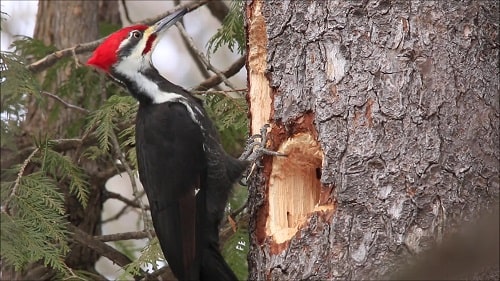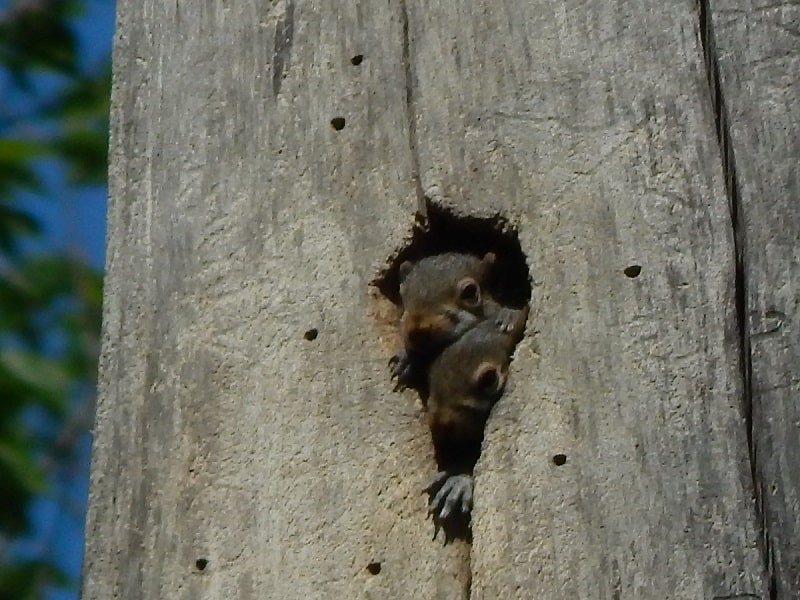Discover How Woodpeckers Build Their Nest
Let's dive into the process of how woodpeckers make their nests and why its important for both their survival and the health of forest.
The Nesting Process: Choosing the Right Tree
First, they are highly selective when it comes to picking the right spot to nest. They typically choose trees with softer wood, such as dead or decaying trees, also known as snags.

These trees are easier for the woodpecker to chisel into and provide the structural integrity needed to protect their eggs and young.
- Ideal Tree Types for Nesting: Aspen, pine, birch, and maple are common choices.
- Preference for Dead Trees: Dead or decaying trees provide softer wood, making excavation easier for the woodpecker.
The Art of Excavation: How Woodpeckers Carve Their Nests
Once a tree is selected, the woodpecker begins its excavation. The process involves a lot of pecking, which is where the bird's name originates.
Using their strong, chisel-like beaks, woodpeckers hammer away at the wood, removing chips until they've hollowed out a cavity deep enough for nesting.
The size of the cavity can vary, but most woodpecker nests are around 6-12 inches deep.
Woodpeckers have specially adapted skulls that absorb the shock of repeated pecking.
Their brains are cushioned by a spongy, shock-absorbing structure that prevents injury.
Additionally, their long, barbed tongues help extract insects from deep within the wood, which provides a food source as they build their nests.
Nest Maintenance: How Woodpeckers Prepare the Interior
After the woodpecker has completed the excavation, they don't just leave the cavity bare. They carefully prepare the interior of the nest to ensure it's a safe and comfortable environment for their eggs.
While they don't add extra nesting material like grass or leaves, the natural wood chips often remain at the bottom, providing cushioning for the eggs.
Because it takes a while for the young to grow they typically have only one brood per year. This can take anywhere from three to five weeks, depending on the species.
Cavity Nesting and Its Role in the Forest
Nesting cavities don't just benefit woodpeckers themselves.
These abandoned nests often become homes for other species, including birds such as chickadees, nuthatches, and owls.

These cavities are considered an important aspect of the forest ecosystems because they provide habitats for other wildlife and bird species.
As trees age and decay, woodpecker-created cavities contribute to the natural cycle of the forest, supporting biodiversity.
Even mammals such as squirrels and bats may use these cavities as shelter.
This shows how woodpeckers, though small in size, play an enormous role in maintaining healthy ecosystems.
How to Attract Woodpeckers to Your Yard
If you want to attract them to your backyard, creating a suitable environment is key.
Offering food sources such as suet, peanuts, and mealworms can entice woodpeckers to visit your feeders.
Providing dead trees or snags, if safe to do so, can also encourage other cavity-nesting birds to build their nests nearby.
Another option is to install a nest box. These boxes are designed to mimic the natural cavities that woodpeckers would create in trees.
Just make sure to install the box on a tree at least 10-20 feet above the ground and face the entrance away from prevailing winds to provide extra protection.
You can find information on bird house dimensions and hole sizes with this chart.
- Feeding Woodpeckers: Suet, peanuts, and mealworms are great options to attract woodpeckers.
- Providing Nesting Sites: Allowing dead trees or installing properly built nest boxes can encourage nesting.
Conclusion
From selecting the right tree to carefully excavating a secure cavity, woodpeckers put a lot of effort into creating safe homes for their young.
Their nesting habits not only ensure the survival of their species but also support a variety of other animals.
By understanding how woodpeckers make their nests, we can better appreciate these birds and the important role they play in nature.







